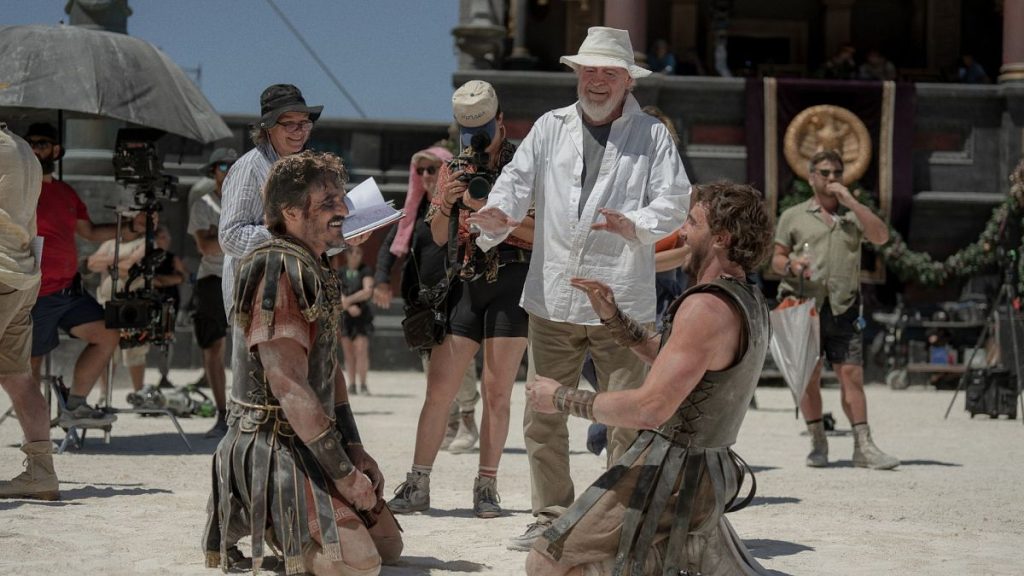The anticipation surrounding the release of “Gladiator II,” the sequel to Ridley Scott’s iconic 2000 film, is significantly impacting Malta as visitors flock to experience the filming locations of the movie. Known as set-jetting, this trend in screen tourism has surged in popularity over recent years, encouraging enthusiasts to travel to sites featured in their favorite movies and shows. In a world where cinematic productions increasingly create immersive experiences, the line between fiction and travel has become increasingly blurred. With “Gladiator II” showcasing Malta’s historic architecture and breathtaking landscapes against the backdrop of its narrative, a substantial increase in visitor engagement from this film is expected. With actors Paul Mescal and Denzel Washington leading the cast, the film has rekindled interest in Malta as both a tourist destination and a filming hotspot.
Screen tourism, or set-jetting, represents a rapidly growing sector in the travel industry, often driven by content from streaming platforms like Netflix, which have the power to influence travel decisions extensively. Reports indicate that almost 40% of trips booked through platforms like Expedia in 2023 were inspired by movies or shows. Netflix’s research indicated that their subscribers are significantly more likely to prioritize destinations they’ve seen on screen. This phenomenon reflects a deep connection between storytelling and real-world travel, translating the emotional draw of cinematic locations into real-life exploration. The arrival of “Gladiator II” provides Malta with a pivotal opportunity to solidify its reputation as a premier screen tourism center, as the anticipation of familiar film locations compels fans to embark on their own journeys.
Ridley Scott’s selection of Malta for filming “Gladiator II” serves both as homage to the original film and a strategic decision based on the island’s rich historical significance. With its blend of Mediterranean charm and ancient architecture, Malta seamlessly transforms into a representation of ancient Rome. As star Denzel Washington noted, the island exudes history, making it an ideal filming location. The production’s centerpiece, Fort Ricasoli—a 17th-century fortress—was transformed into a grand, life-sized Roman amphitheater, capturing the impressive scale of ancient visuals. The ambitious design choices made by production designer Arthur Max and the subsequent CGI enhancements brought the spirit of the original “Gladiator” to life in a captivating manner. As Malta rises to prominence as a cinematic landmark, the fusion of its heritage with Hollywood spectacle creates a vibrant narrative for both film enthusiasts and future tourists.
The economic implications of seminal films like “Gladiator” extend beyond mere entertainment, as they often serve to boost local economies significantly. Tourist boards recognize that productions can tremendously increase visibility and foot traffic in a region. For example, prior films like “Game of Thrones” and “Bridgerton” have generated significant economic benefits for their respective filming locations. Malta’s tourism director anticipates that “Gladiator II” will similarly capture global attention, propelling interest in its sites, like Fort Ricasoli and the historic city of Mdina. Guided tours highlighting film locations and their historical relevance provide opportunities for deeper engagement, leading to positive long-term effects on local tourism and economy.
While the influx of tourists inspired by screen tourism brings extensive benefits, it also presents challenges such as overcrowding and the strain on local infrastructure. Experts emphasize the need for sustainable tourism strategies to avoid overwhelming communities that host such projects. Countries like the UK have faced difficulties managing high tourist numbers after films were released, showing the necessity of strategic planning to maintain balance. In contrast, Malta is already taking proactive steps to manage this situation effectively, thanks to its established cooperation between tourism agencies and film commissions. By crafting manageable tourism experiences that integrate local input, Malta demonstrates a commitment to preserving both its cultural integrity and the visitor experience.
Ultimately, “Gladiator II” represents a critical moment for Malta’s future as an enduring cinematic destination. The film holds the potential to elevate Malta’s profile as a hub for screen tourism while also preserving its heritage. Continued investments in sustainable practices and tourism management will ensure that the island not only meets the demands of increased visitor interest but also promotes the unique characteristics that make it special. Ridley Scott’s admiration for Malta is echoed in his remarks about the vibrant life of the island, suggesting that Malta can thrive as not just a backdrop for film but as a prominent character in its own right—a destination for both film fans and everyday travelers alike.


